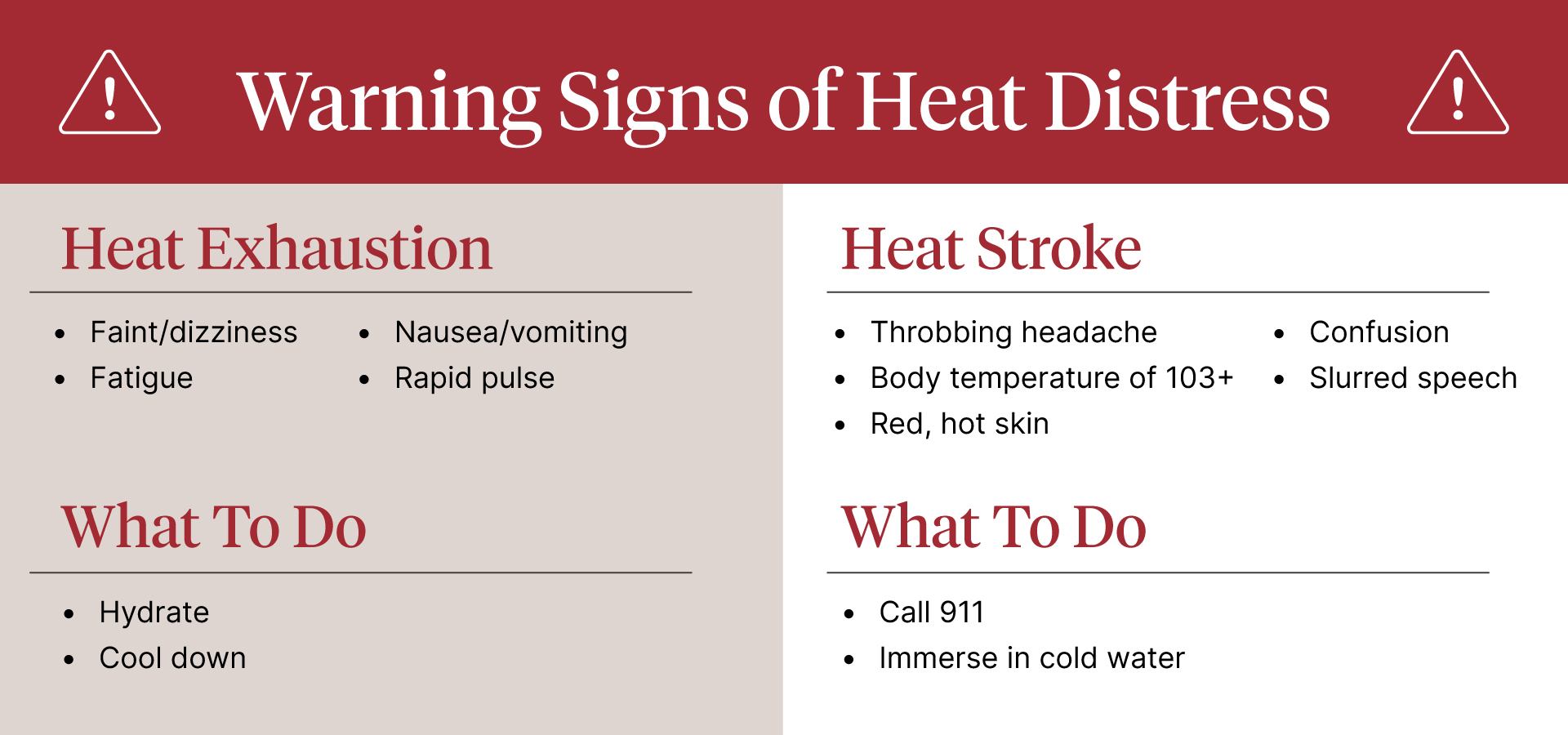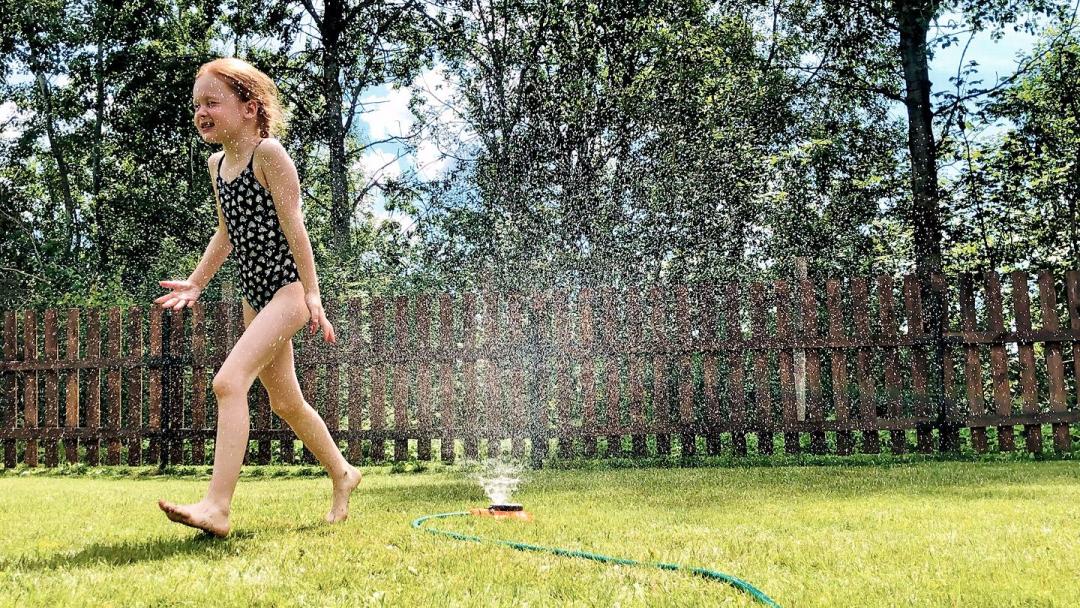It’s been hot across large sections of the U.S. for weeks. Historically hot. In fact, July was the hottest month ever recorded, which puts millions of people at risk of suffering heat-related health issues.
Heat extremes are the No. 1 weather-related killer, responsible for the deaths of more than 600 Americans every year, according to the U.S. Environmental Protection Agency. When people are exposed to extreme heat, they can suffer potentially deadly consequences, such as heat exhaustion and heat stroke. High temperatures can also contribute to deaths from heart attacks and strokes. At particular risk of heat-related deaths are older adults and young children, and those living with chronic conditions like diabetes and respiratory and cardiovascular diseases.
Keeping cool in extreme heat is challenging, but it can mean the difference between life and death. Fareeda Steele, a Walgreens pharmacist in Palm Beach, Florida, shares three simple insights on how to stay safe.
For those who don’t want to just drink water, she suggests alternating with a bottle of coconut water, which helps hydrate, but offers flavor with very low sugar, while citrus fruit, berries and watermelon all have high water content and can be snacked on throughout the day. Avoid drinking alcohol and caffeinated beverages, which accelerate dehydration by making you urinate more.
Electrolyte replacement is also critical in hot weather, according to Steele.
“When it’s hot out you sweat, and when you sweat you lose potassium and sodium through your skin, which can lead to dehydration. So, electrolyte replacement is key. If you're on the go and you know you're going to be outside for an extended period, grab an electrolyte-infused water or pour electrolyte powder into a bottle of water, shake it up and drink it.”
Steele suggests these products to help balance your electrolytes and stay hydrated in extreme heat:

Source: Centers for Disease Control and Prevention
Steele offers these tips to understand the early signs of too much heat, and what to do about it:
“Whether you’re a patient with a chronic illness, or a caregiver of someone with one, always take precautions with the heat because it can have dramatically greater impact on their health,” she says. “Extreme heat can bring about power outages, so does a person with diabetes have a supplemental cooler to keep insulin at its correct temperature if the refrigerator isn’t working? Do you have extra food, water and diabetes care supplies on hand in case you can’t get to a Walgreens?
“If you have cardiac issues, do you have a battery-operated blood pressure monitor and a fresh supply of batteries?” she continues. “Think through the things that are absolutely vital to maintaining your health in extreme conditions, then make sure everything’s in place, whether you’re staying home or going outside.”
Heat extremes are the No. 1 weather-related killer, responsible for the deaths of more than 600 Americans every year, according to the U.S. Environmental Protection Agency. When people are exposed to extreme heat, they can suffer potentially deadly consequences, such as heat exhaustion and heat stroke. High temperatures can also contribute to deaths from heart attacks and strokes. At particular risk of heat-related deaths are older adults and young children, and those living with chronic conditions like diabetes and respiratory and cardiovascular diseases.
Keeping cool in extreme heat is challenging, but it can mean the difference between life and death. Fareeda Steele, a Walgreens pharmacist in Palm Beach, Florida, shares three simple insights on how to stay safe.
1) Hydrate, hydrate, hydrate
“Hydration is fundamental to our wellbeing and our cognitive function,” says Steele. “Staying cool in the heat is the plan, so drink plenty of liquids throughout the day, and don’t wait until you’re thirsty to drink something. However, if you have a specific medical problem where your doctor has informed you to restrict your water intake, follow the doctor’s advice.”For those who don’t want to just drink water, she suggests alternating with a bottle of coconut water, which helps hydrate, but offers flavor with very low sugar, while citrus fruit, berries and watermelon all have high water content and can be snacked on throughout the day. Avoid drinking alcohol and caffeinated beverages, which accelerate dehydration by making you urinate more.
Electrolyte replacement is also critical in hot weather, according to Steele.
“When it’s hot out you sweat, and when you sweat you lose potassium and sodium through your skin, which can lead to dehydration. So, electrolyte replacement is key. If you're on the go and you know you're going to be outside for an extended period, grab an electrolyte-infused water or pour electrolyte powder into a bottle of water, shake it up and drink it.”
Steele suggests these products to help balance your electrolytes and stay hydrated in extreme heat:
- Nice! Hydration Drink Mix with Electrolytes
- Propel Zero Sugar Electrolyte Water in Kiwi Strawberry and Grape flavors
- Walgreens Dye-Free Electrolyte Solution
- Gatorlyte Rapid Rehydration beverage in Strawberry Kiwi and Orange flavors
2) Know the warning signs
Sometimes, no matter how much water we drink or how sensible we try to be in the sun, the heat still wins. Prolonged heat exposure can cause dramatic changes to the body, so it’s critical to pay attention to your body and what it’s telling you.
Source: Centers for Disease Control and Prevention
Steele offers these tips to understand the early signs of too much heat, and what to do about it:
- Urine should be a light pale yellow. Darker colored urine can be a sign that you’re becoming dehydrated and need to consume more fluids.
- Heat exposure can cause headaches and impact blood pressure and heart rate, making you feel dizzy and unwell quickly. If you feel these symptoms, find a cool place to sit down as soon as possible and drink fluids.
- Patients with diabetes can experience higher blood sugar values in extreme heat, so drinking water and following healthy steps to self-monitor sugar, blood pressure and heart rate is important.
- For patients with respiratory conditions, humidity can aggravate and cause shortness of breath and set off a bronchospasm, so keeping medications such as an albuterol inhaler on-hand is vital.
3) Keep it simple, but also plan ahead for contingencies
Often, the simplest solutions are the best solutions, particularly when it comes to managing your health in the heat. Steele suggests this common sense heat management checklist:- Check the weather before you leave the house. If the heat index feels too high ask yourself, "Is it critical that I go outside today?" If it's not, stay inside. If it is, then you need to plan ahead for extreme conditions. Walgreens can help you stay inside with quick delivery in as little as one hour on online orders, directly to your door. Simply choose Same Day Delivery at checkout.
- If possible, stay out of the sun during the peak hours of the day.
- Pace yourself … slowly.
- Apply sunscreen with an SPF of at least 30, like Walgreens Sport, anytime you venture outside.
- Extreme heat can affect the body’s ability to cool itself, so use an external measure like a fan, apply ice packs or cooling wraps to key pulse points and the back of your neck, and wash your face with cold water.
- Wear lightweight, loose-fitting clothing, a wide-brimmed sun hat and bring an umbrella to provide always-there shade.
“Whether you’re a patient with a chronic illness, or a caregiver of someone with one, always take precautions with the heat because it can have dramatically greater impact on their health,” she says. “Extreme heat can bring about power outages, so does a person with diabetes have a supplemental cooler to keep insulin at its correct temperature if the refrigerator isn’t working? Do you have extra food, water and diabetes care supplies on hand in case you can’t get to a Walgreens?
“If you have cardiac issues, do you have a battery-operated blood pressure monitor and a fresh supply of batteries?” she continues. “Think through the things that are absolutely vital to maintaining your health in extreme conditions, then make sure everything’s in place, whether you’re staying home or going outside.”
